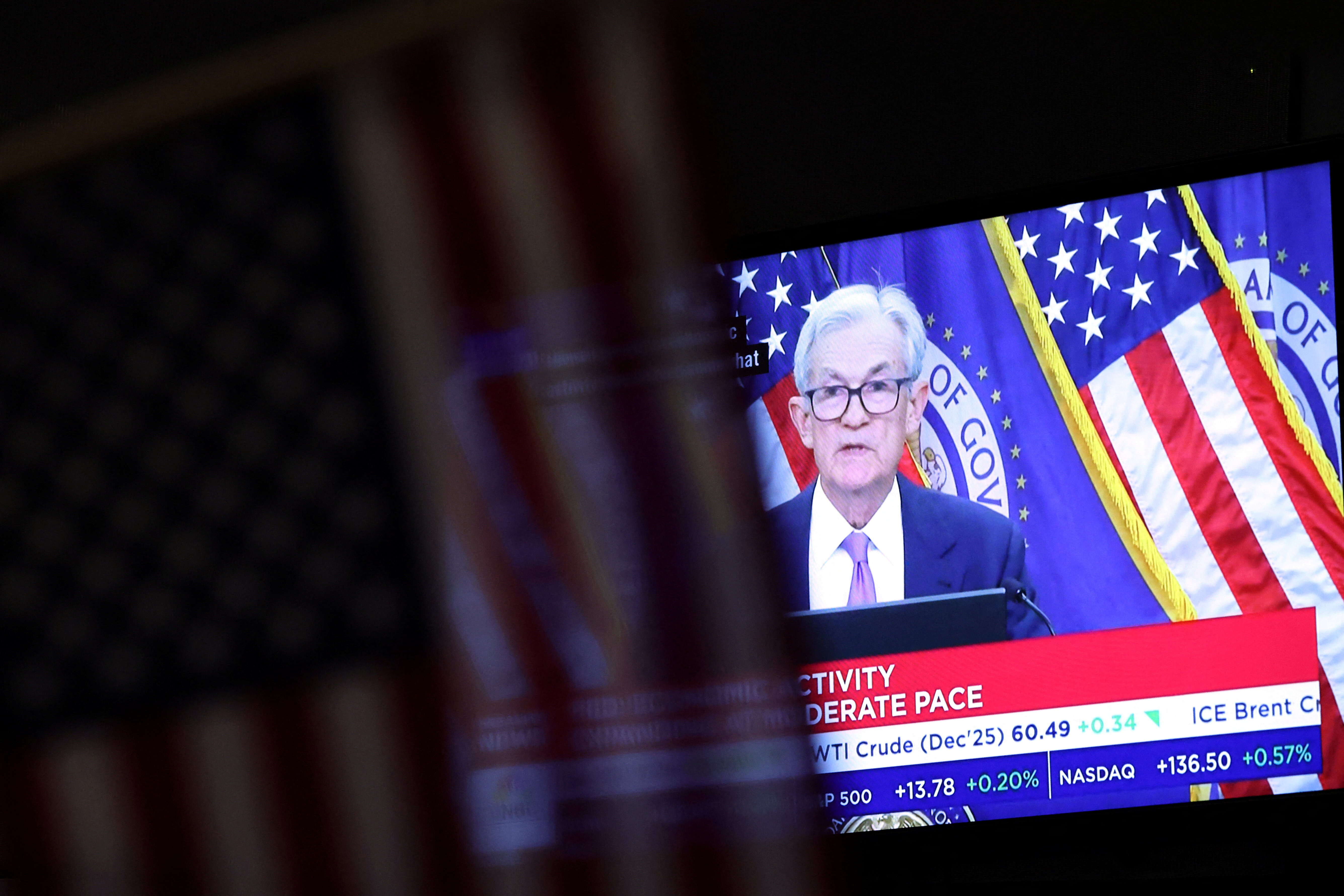This is how the world can tackle debt deflation

Image: Silhouetted workers walk in front of office towers in the Canary Wharf financial district in London. REUTERS/Luke MacGregor
In March, meetings of the G-20, the Chinese National People’s Congress, and multiple think tanks all reflected a growing awareness of the risks to the global economy posed by deflation and intensifying financial instability. In mitigating these risks, the path that China takes will be particularly important. But avoiding a hard landing in China is a necessary but insufficient condition for global recovery.
Contrary to the advice of many Chinese economists, the country’s policymakers have opted not to follow the conventional Western approach of using flexible exchange rates as the main shock absorber for volatile capital flows and thereby freeing monetary policy to provide liquidity for domestic structural adjustments. This satisfied both Western economists and global financial markets, which breathed a collective sigh of relief when Chinese leaders reaffirmed their commitment to maintaining a stable renminbi.

The fear was that, if China sought a weaker exchange rate to escape deflation, the result would be another round of global competitive devaluations and even more deflation. Fortunately, China’s leaders recognize that, if the world remains mired in a balance-sheet recession, the lack of aggregate demand, by continuing to weaken trade, will drag down their own country’s growth.
But, of course, China still needs to find a way to cope with capital outflows, while pursuing the structural reforms that are needed to place its economy on a sustainable long-term growth path. As we recently argued, the key will be to maintain an annual growth rate of roughly 6.5%, while pursuing a multifaceted short-term stabilization plan that aims to stimulate job creation to offset the losses from restructuring inefficient industries and eliminating excess capacity.
Meanwhile, the People’s Bank of China (PBOC) would face the unenviable task of both maintaining exchange-rate stability and combating deflation, by ensuring that the liquidity needed to support the shift away from manufacturing toward services and consumption is available at reasonable rates. Given how much of its official reserves China has already spent stimulating the economy and stabilizing the exchange rate, as well as the size of capital outflows – equivalent to three times the current-account surplus last year – tactics like reducing reserve requirements would be key here.
The PBOC would, of course, have to tighten controls on foreign exchange. But it is also contemplating other macro-prudential instruments, such as a kind of Tobin tax, the levy on financial transactions first suggested in 1972 by the Nobel laureate economist James Tobin, in order to discourage volatile capital flows.
All of this amounts to Plan A – an unavoidable strategy for stopping deflation in China. But, in today’s multipolar global system, no single country can save the global economy from debt deflation. That is why the world must also consider implementing a shared strategy; call it Plan B.
Of course, collective action will not be easy – not least because some measures, such as a global monetary or fiscal policy, were ruled out at the 1944 Bretton Woods conference, where world leaders created the international economic and financial architecture that prevails today. But, in the face of unprecedented threats to global economic stability, it may be time to convene another Bretton Woods-type conference to determine what collective measures are possible.
There is plenty of incentive for action. With the advanced economies facing rapid population aging, large public-debt burdens, overstretched monetary policies, and fractious politics, the global economy’s capacity to escape its current rut depends largely on the emerging economies. After all, while these economies are facing challenges of their own, they enjoy more favorable demographics and are experiencing rapid urbanization. As a result, they have huge potential for productivity gains, which would strengthen global economic growth, and massive demand for sustainable infrastructure to reduce resource depletion and address global warming.
The main constraint on realizing the emerging economies’ potential is financial, with the Bretton Woods institutions unable to provide the needed capital. If the world is to escape the debt-deflation trap – not to mention address rising income and wealth inequality – this must change.
The recent panic over the renminbi’s depreciation highlights another compelling reason for collective action. In today’s world, nobody is safe from large and volatile capital flows – not even countries that have built up huge amounts of self-insurance in the form of foreign-exchange reserves. In 2007-2009, the advanced economies managed to escape a liquidity crisis, largely because the US Federal Reserve was willing to engage in liquidity swaps with key central banks, mostly those of US allies. Only with a global liquidity-insurance system – underpinned by multilateral currency-swap arrangements – can countries pursue much-needed reflation, without excessive fear of capital flight and/or exchange-rate devaluation.
Finally, collective action is needed to make unconventional monetary policy more effective. Thus far, such policies have failed to revive the global economy largely because commercial banks and other lenders retained the liquidity they received from their central banks, instead of channeling it to the real economy by providing credit to small and medium-size enterprises and investing in long-term infrastructure projects.
It is no coincidence that from 2010 to 2014, the largest banks, firms, and investment funds increasedtheir cash holdings by $3 trillion – roughly the amount by which central banks in reserve-currency countries expanded their balance sheets over the same period. By enabling countries to eliminate excess capacity, reduce leverage, and balance tax policies – all while reducing geopolitical uncertainty – collective action to escape deflation and boost growth would mitigate financial institutions’ risk aversion, thereby improving the transmission mechanisms of unconventional monetary policies.
Reaching global consensus is always difficult. But, in today’s context, there is no avoiding it. If countries continue to try to go it alone, the entire world will suffer.
Don't miss any update on this topic
Create a free account and access your personalized content collection with our latest publications and analyses.
License and Republishing
World Economic Forum articles may be republished in accordance with the Creative Commons Attribution-NonCommercial-NoDerivatives 4.0 International Public License, and in accordance with our Terms of Use.
The views expressed in this article are those of the author alone and not the World Economic Forum.
Stay up to date:
Financial and Monetary Systems
Forum Stories newsletter
Bringing you weekly curated insights and analysis on the global issues that matter.
More on Financial and Monetary SystemsSee all
Jaime Magyera
November 13, 2025






